Types of whales: meet the largest animals in the ocean
Types of whales: meet the largest animals in the ocean
Whales are magnificent creatures. Not only are they highly intelligent, complex communicators, and the largest living animals on our planet, but they also protect us and the environment by providing the nutrients that help phytoplankton (tiny marine organisms that use photosynthesis) produce more than 50% of the world’s oxygen.
Did you know that all species of whales are grouped into just two suborders? There are 76 species of odontocetes (toothed whales), which use teeth to hunt for prey, and 14 species of mysticetes (baleen whales), which use baleen plates to filter food from the water. Baleen consists of bristle-like structures made from keratin—the same protein that makes human hair and fingernails.
Baleen whales evolved from toothed whales, and they are some of the largest animal species on Earth. Toothed whales, on the other hand, are smaller on average, and this group also contains dolphins and porpoises. While baleen whales eat tiny organisms like krill and zooplankton, toothed whales feed on larger animals like fish and squid.
Here are some different types of whales within these two groups, how to identify them, and what makes them so unique.
Mysticetes (baleen whales)
Humpback whale
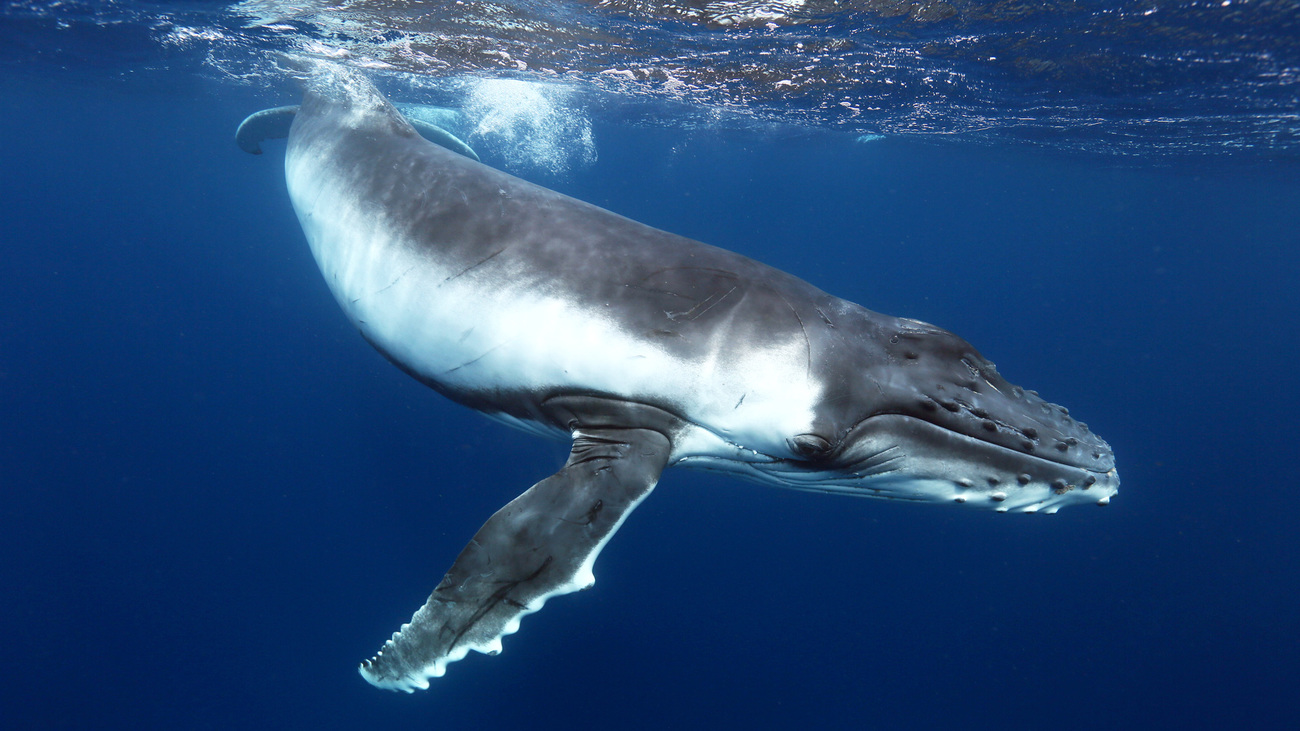
Acrobatic and charismatic, humpback whales (Megaptera novaeangliae) are one of the most well-known whale species and the stars of many whale watching tours. These baleen whales can grow to over 15 metres (50 feet) long and weigh over 36 metric tonnes (40 US tons).
Humpback whales are easily recognised by their long pectoral fins, which are the longest of any whale species—one third of their body length. The humpback whale’s scientific name translates to ‘big-winged New Englander’. They also have an irregularly shaped dorsal fin and a hump that gives them their common name.
Knobby bumps on a humpback’s head are enlarged hair follicles called tubercles, which each contain at least one sensory hair. Their tails—called flukes—are unique to each individual, much like human fingerprints. Black and white patterns along with scarring on the underside of a humpback whale’s fluke help to identify it as an individual.
Blue whale
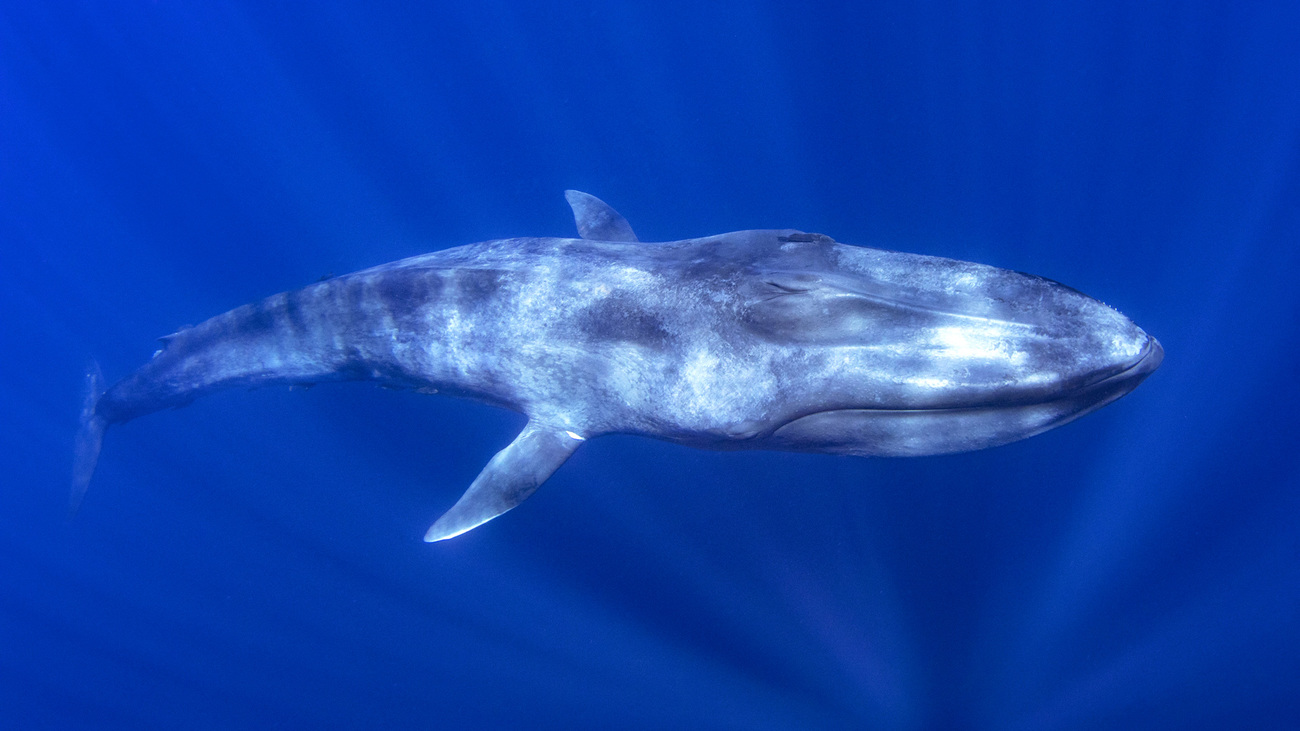
The blue whale (Balaenoptera musculus) is the largest animal on Earth. This baleen whale can grow up to 30 metres (100 feet) long and weigh as much as 90 metric tonnes (100 US tons)—their tongues alone weigh as much as an elephant! Blue whales are sleek and slender, and their streamlined, blue-grey bodies appear bright blue underwater, which gave them their name.
In addition to being the largest, blue whales are also the loudest animals on Earth. They can emit low-frequency vocalisations as loud as a jet plane, which are heard by other whales hundreds of miles away.
Right whale

The right whale gets its name from the fact that whalers called it the ‘right’ whale to hunt due to its slow swimming speed and large amount of blubber, which was used for its oil. As a result, right whales have been hunted to near extinction. Commercial whaling has been banned since 1986 around the world, but the practice continues in a few countries using loopholes in regulations. Today, all populations of right whales are protected by law.
There are four species of right whale: the North Atlantic right whale (Eubalaena glacialis), North Pacific right whale (Eubalaena japonica), Southern right whale (Eubalaena australis), and bowhead whale (Balaena mysticetus). The North Atlantic right whale is one of the most endangered species of whales in the world—there are only about 350 remaining. IFAW is leading efforts to protect this critically endangered species from the dangers of entanglement in fishing gear, underwater noise pollution, and vessel strikes.
Right whales can grow up to 15 metres (50 feet) long and weigh up to 63 metric tonnes (70 US tons). They have stocky, black bodies with white patches on their undersides. They lack a dorsal fin and have paddle-like pectoral flippers along with broad, smooth-edged flukes that help propel their massive bodies.
One of the most distinct features of right whales are their huge heads, which have roughened white patches called callosities. These are covered in whale lice, called cyamids. Each individual right whale has its own unique pattern of callosities, making them a perfect way for researchers to identify individuals.
Another distinctive characteristic of a right whale is the V-shaped blow or spout produced when it takes a breath.
Fin whale
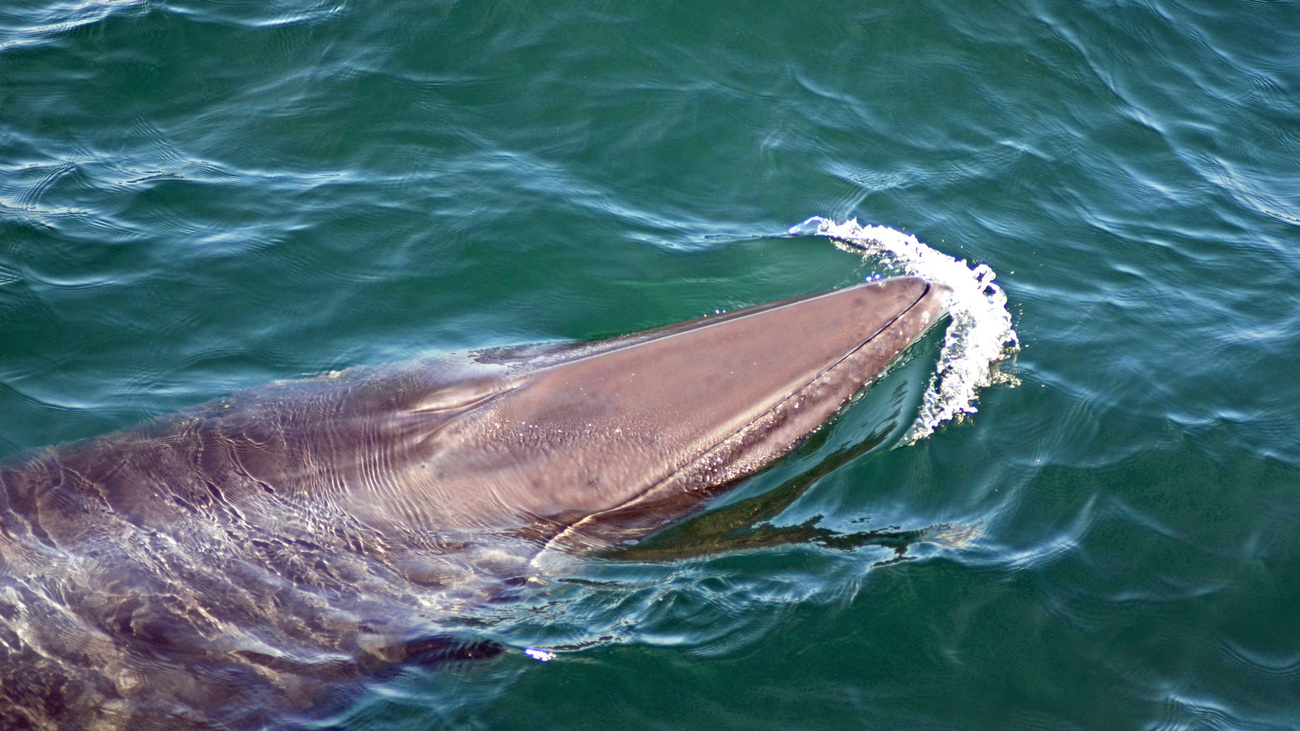
The second largest animal on Earth next to the blue whale is the fin whale (Balaenoptera physalus), also known as the finback whale. Named for its prominent dorsal fin, which is two thirds of the way back on its body, the fin whale can grow up to 24 metres (80 feet) long and weigh up to 63 metric tonnes (70 US tons).
One of the fastest swimming whales, fin whales are nicknamed the ‘greyhounds of the sea’. Fin whales belong to the rorqual family—a group of whales that also includes blue whales and humpbacks—which means they have pleats or grooves around their throat that expand to take in massive amounts of water and prey. This is the perfect adaptation to grow to massive sizes!
Fin whales have streamlined grey bodies with irregular white patches called chevrons that begin behind their blowholes and continue down onto their sides. They also have asymmetrical colouration—the lower right of their jaw is white, while the rest of their jaw is grey. It’s thought that this asymmetry helps them corral prey while they are hunting.
In Iceland, fin whales sadly continue to be hunted. Partnered with IceWhale, IFAW created the Meet Us, Don’t Eat Us campaign in Iceland to gain support for sustainable whale watching instead of commercial whaling and consumption.
Other baleen whales include minke whales, grey whales, sei whales, Bryde’s whales, Rice’s whales, Omura’s whales, and pygmy right whales.
Odontocetes (toothed whales)
Sperm whale
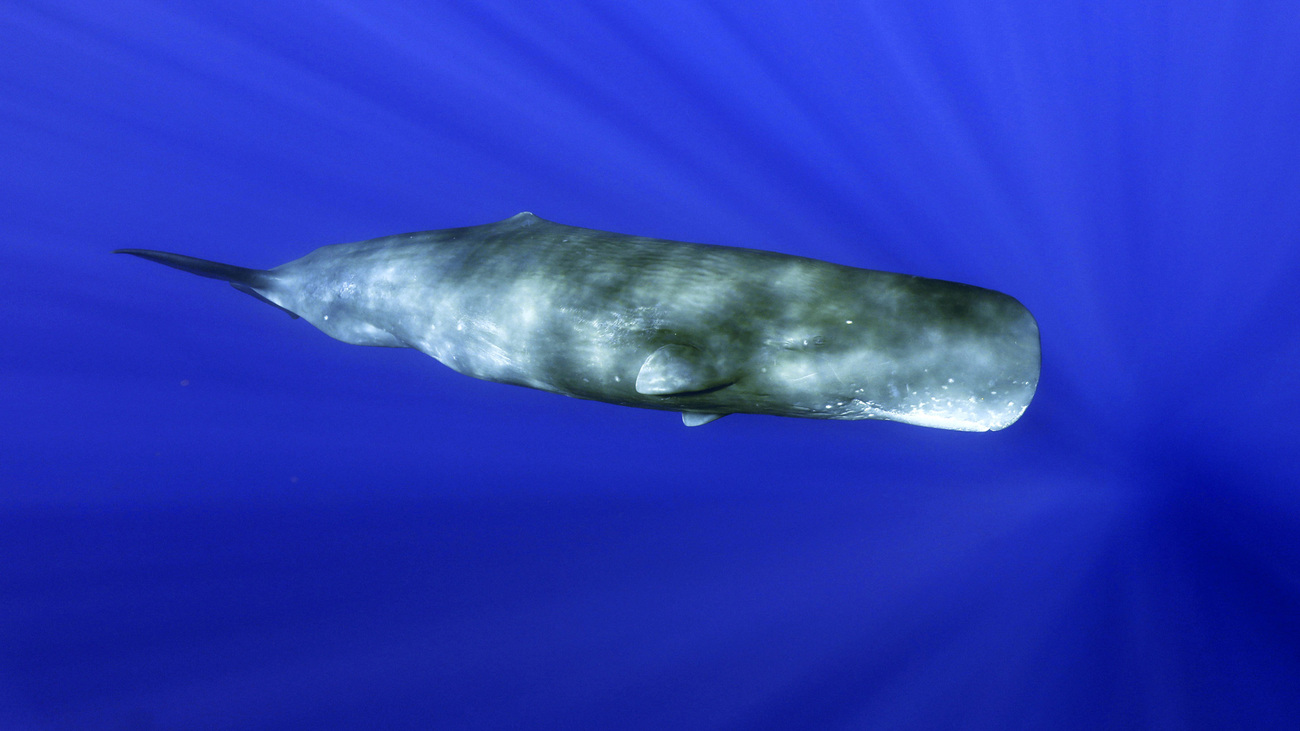
Sperm whales (Physeter macrocephalus) are the largest toothed whales—as such, they are the world’s largest toothed predators. Growing up to 18 metres (60 feet) long and weighing 40 metric tonnes (45 US tons), the sperm whale has a dark grey body with a wrinkled appearance. It has a small jaw and a large, blunt head with one blowhole off centre on the left side.
Sperm whales are some of the deepest diving whales, spending more than an hour on dives at depths up to 600 metres to hunt for giant squid. While diving, they use echolocation clicks and pulses.
A primary target in commercial whaling, sperm whales are named for the waxy oil in the organ called their melon, a mass of tissue at the front of a whale’s head. This oil, called spermaceti, was used in products like candles and oil lamps. Nearly decimated by hunting in the 1800s, sperm whales are now endangered and protected throughout their range.
Orca
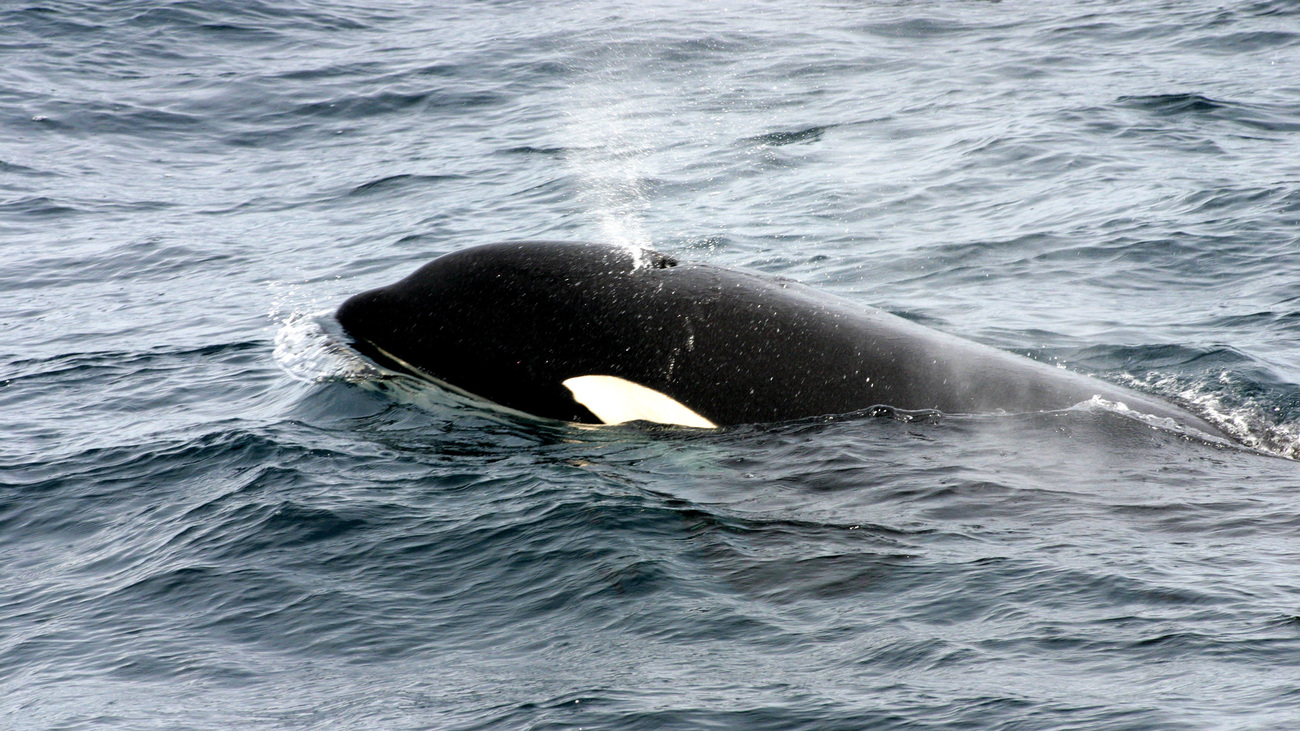
Also known as the killer whale, the orca (Orcinus orca) is one of the most well recognised whales in the ocean, thanks to their distinct black and white colour patterns. Technically considered the largest dolphin, the orca can grow up to 9 metres (32 feet) long and weigh up to 8 tonnes (9 metric tonnes). A male orca has a tall, triangular dorsal fin that can reach up to 2 metres (6 feet) high, while females have smaller, curved dorsal fins.
One of the most well-studied species in the world, orcas are highly intelligent and have complex social structures. They are known to be fierce hunters and have earned the nickname ‘wolves of the sea’.
Beluga whale
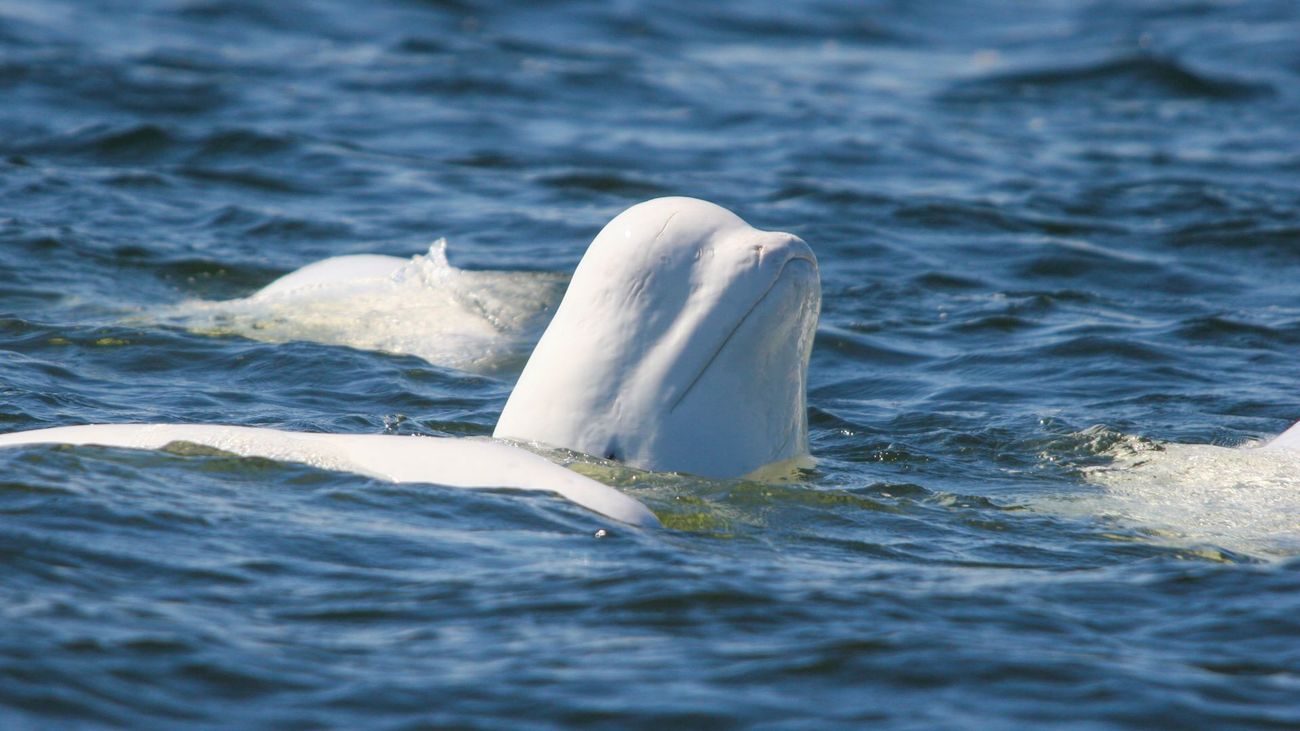
The beluga whale (Delphinapterus leucas) is a species of toothed whale that lives in the Arctic and sub-Arctic regions of the Northern Hemisphere. Belugas grow up to 4.5 metres (15 feet) long and weigh up to 1.3 metric tonnes (1.5 US tons).
Belugas can be recognised by their uniform white colour, which is how they received their name—beluga translates to ‘white’ in Russian. They have a round head with a bulbous forehead, where their melon organ is located.
As one of the most vocal whale species, belugas received the nickname ‘sea canaries’ by early mariners, who could hear their vocalisations through the hulls of their boats.
Other types of toothed whales include beaked whales, dwarf and pygmy sperm whales, narwhals, and all dolphins and porpoises.
How can you help?
All whale species are incredibly important for the health of their ecosystems and the ocean as a whole. They circulate nutrients, feed phytoplankton, store carbon, and help us combat climate change. Without whales, our oceans and planet—and countless animal species—would be in danger.
Unfortunately, deadly threats like ocean noise pollution, plastic pollution, collisions with vessels, whaling, and entanglement in fishing gear continue to push many whale species closer to extinction. Whale watching is a great economic alternative to whaling, and other initiatives to protect whales include whale-safe lobster fishing gear and vessel speed restrictions.
Learn more about these threats and how IFAW is working to protect whales.
Related content
Our work can’t get done without you. Please give what you can to help animals thrive.